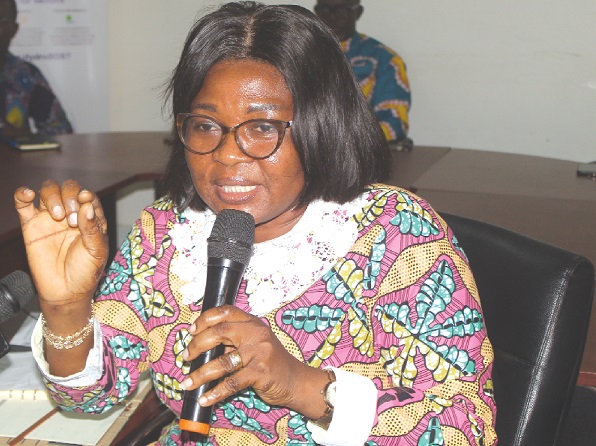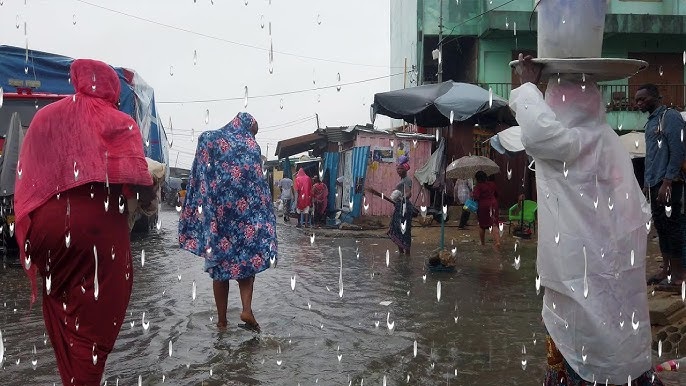Up to November, expect more rain, GMet advises.

The Ghana Meteorological Agency (GMeT) has issued a warning that the pattern of rainfall from September to November this year may cause more confined flooding in Accra and Kumasi’s low-lying districts.

SON rainfall
The majority of the country, with the exception of some areas in the south-western parts around Asankragwa in the Western Region and the transition portions of the country, which refers to Kintampo and the surrounding areas of the rain forest regions towards the northern areas, is expected to experience above-normal SON rainfall this year.
It predicted that most of the rain would fall as light to moderate rain that fell over several hours, with a few heavy incidents possible.
Many locations in the country’s north would reportedly also have a lot of rainfall, usually above average.
It stated that there was a high likelihood of a few instances of heavy rain combined with strong winds and lightning at the height of the SON season, which could result in small-scale flooding.
“During the months of September through November, flash floods could happen in locations like the low-lying areas of Accra and Kumasi, particularly in the month of October. As a result, when it rains, some routes can become inaccessible, the organization said.
It was discovered that brief to normal dry spells were anticipated towards the start of the minor season, while prolonged to normal dry spells were anticipated over the majority of locations in the southern areas of Ghana near the end of the season.
According to the report, this year’s rainy season in the inland areas surrounding coastal towns was likely to terminate earlier than usual.
Additionally, most locations in the forested areas, according to the report, would have their seasons conclude on schedule.

Safety measures
As a result, the agency has cautioned decision-makers in the disaster management industry to set up and implement integrated monitoring and early warning systems for flood risk.
It recommended intensifying communications between the organizations in charge of monitoring floods, reducing the risk of disasters, and providing humanitarian help.
Additionally, it asked the various gatherings to inform people in flood-prone areas to leave while pushing those in vulnerable places to be aware of the looming risk.
Health precautions
According to the EPA, there is a higher risk of cholera, malaria, dengue fever, bilharzia, and diarrhea in areas where the rainy season is wetter.
It was advised that public education should be stepped up through national platforms on disaster risk reduction through the media and information vans in order to lessen the spread of germs and lower the risk of infections.
Additionally, it stated that there needed to be an increase in communication among stakeholders, including organizations that deal with meteorology, hydrology, and disaster management.
Agriculture
The agency advised farmers, particularly those in the eastern coastal districts, to concentrate on quick-maturity crops because the season was shorter in order to lessen its impact on agriculture.
Additionally, it urged them to practice the creation of yield enhancement strategies for both food crops and cash crops and to invest more money in seeds of improved kinds.
Given the possibility of a moisture deficit at the end of the growing season and the fact that the growing season is shorter, it is recommended farmers be careful with their choices.
It recommended the farmers diversify their sources of income and promote agricultural techniques like no-till, mulching, market gardening, and agroforestry to make up for any production shortfall that might occur in areas that are vulnerable to dry periods at the end of the season.
As a result of the chance of rain during harvest season, which could result in post-harvest losses, it also recommended farmers implement farming practices for the conservation of soil water and create plans to protect farm produce.

Changing weather
Prof. Kwadwo Owusu, the director of the University of Ghana’s Centre for Climate Change and Sustainability Studies, stated that although climate change directly affected rainfall patterns, the existing state of affairs was normal.
“It’s typical for there to be more rain from August through October, but this hasn’t happened recently. But there is no need to worry, he added.
He continued by saying that further rain should fall through the end of October if the season was typical.
“If the season is normal, there will be rain until that point,” he added. “I am not forecasting that there will be more rain until October, but I am saying that if the season is normal, there will be rain until that point.”
Context
The geographical, temporal, and seasonal distribution of rainfall is used to explain rainfall patterns.
According to experts, the alteration in the pattern of rainfall is a result of global warming.
They suggest that unpredictable changes in the rainfall pattern would have an impact on agriculture, particularly given how strongly dependent third-world agriculture relied on the seasonal rainfall pattern.
According to them, the situation could lead to food insecurity for the growing global population.
They also contend that flood, drought, and famine, which were the consequences of the changing patterns, could worsen.
As recently as August this year, the European Commission published a technical article on how climate change was disrupting rainfall patterns and putting global health at risk.









